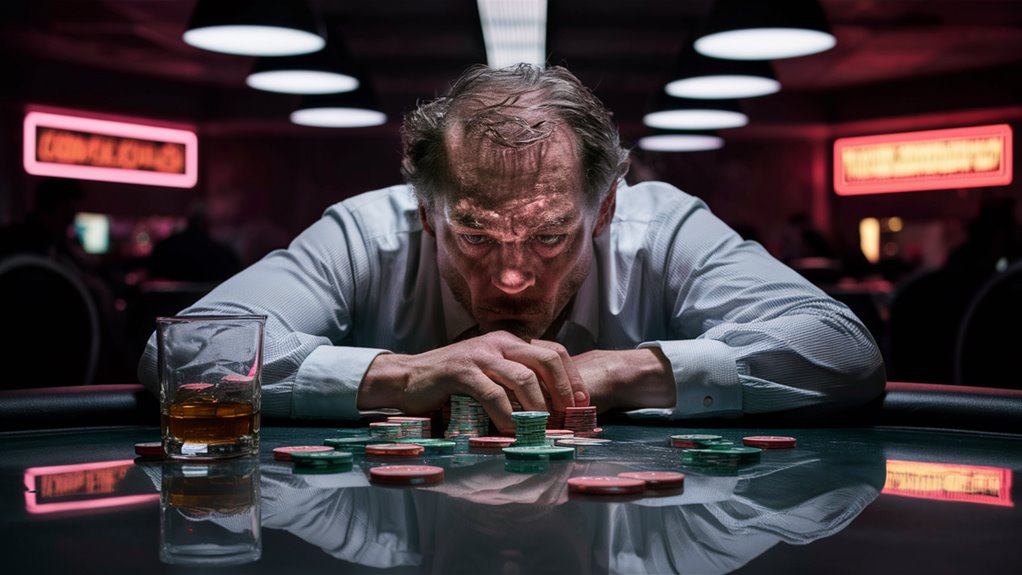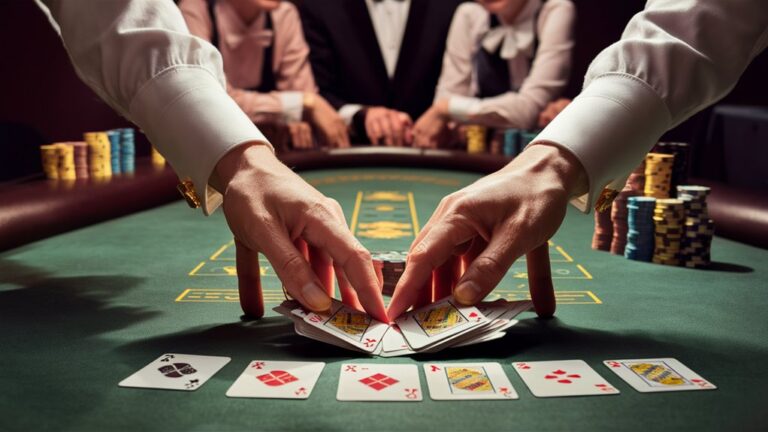
The Psychology of Winning and Losing in Gambling: A Deep Dive

How the Brain Reacts to Gambling
The link between gambling actions and brain paths forms strong mind effects that guide choices. As wins happen, the brain puts out dopamine, setting off high joy feelings that get stronger through close losses and looking forward. This brain joy 이 내용을 꼭 확인해보세요 system is key in making and keeping gambling habits.
The Effect of Wins vs. Losses
Studies show that gambling losses feel twice as bad as wins in the brain, but players keep thinking they will win more. This mind gap comes from the brain’s feeling parts beating the thinking parts, making a strong pull that leads to more gambling.
Places and People’s Effects
Casino sights and group pulls really affect betting choices by:
- Clever setting of sights and sounds
- Group push and getting okayed by others
- Room design that makes you play more
- Tricks that make you lose track of time
The Brain Science Behind Choices
Usual risk checking ideas point to clear choice patterns, but in truth, there are mixed actions between:
- Joy paths
- Stress reactions
- Top brain control spots
- Memory making work
These brain paths really change gambling views and acts, making strong mind effects that can beat clear thinking when making choices.
Behavioral Reinforcement Patterns
The mix of not always giving a prize and changing prize plans makes very strong behavior patterns. This brain outline shows why gambling can keep such a strong hold over choice processes, even when losing often.
The Brain’s Joy System
How the Brain’s Joy System Works in Gambling
Dopamine and the Joy Path
The brain’s joy tracks put out dopamine, a key brain signal linked to joy and drive, during gambling.
This brain signal reply happens not just when winning, but also when waiting for a prize.
The wait for dopamine rush makes a strong push that keeps gambling going even during a streak of losses, as the brain feels joy just from the chance of winning.
The Strength of Not Always Giving a Prize
Not always giving a prize is key in making the brain’s joy reply during gambling.
When prizes come without a set time, the brain keeps a high dopamine level all through the gambling time.
This acts like lab tests where subjects show more lever-push behavior under random prize conditions than expected ones.
The random prize plan makes a very strong addiction reply in the brain’s joy system.
Close Losses and Brain Reaction
The brain’s joy system shows an interesting reply to close losses in gambling.
These close wins set off dopamine rushes almost like real wins.
This brain work shows why close losses push more gambling instead of stopping it.
The brain sees these close calls as good signs, making it much harder for people to stop gambling even as they lose more.
Why Losses Hurt More
Why Losing Feels Worse Than Winning
The Thought of Not Wanting to Lose
Not wanting to lose shapes how we make choices deeply, with studies showing losses feel twice as bad as same wins.
When someone loses $100, it hits much harder than the joy of getting the same. This mind lean changes how we see risk and choose in many ways.
Nerve Paths in Loss
The brain works through losses with clear nerve paths that make strong stress responses.
During money losses, the body lets out cortisol, making a fight mode that changes thinking. This body reaction often leads to broke thinking and more risk acts, seen a lot in gambling spots where people bet more trying to get back losses.
Memory Making and Feeling Hits
Bad times make deeper brain marks than good, especially in gambling.
Big feel centers work more in losses than in wins, making longer and clearer bad memories. This stronger feeling process shows why gambling losses stay in mind long after they happen, while wins fade faster.
These body works add a lot to problem gambling patterns, as the strong hit of losses makes bigger behavior pulls than similar wins.
Change in Choosing
The mix of not wanting to lose, stress replies, and deep feeling work makes a strong mind outline that sways money acts.
Seeing these works is key to know and fix bad gambling patterns and make better risk plans.
Close Losses and Fake Hopes
Seeing Close Losses and Fake Hopes in Gambling

The Thought of Close Losses
Close losses in gambling make a lying mind feel like the nerves that win.
Brain scans show active spots in joy centers during close losses just like real wins, even though they are clear losses. This strong show explains why gambling goes on even after lots of losses.
Made Experiences and Dopamine Replies
Casinos and game makers put close loss points in their systems on purpose.
When big win signs line up but one is off, or when roulette numbers are next to picks, the brain lets out dopamine – the main signal in addiction paths.
This made wait sets off dangerous mind twists, making beliefs about being “due” for wins or “getting close” to a win.
Breaking the Fake Look
The plain truth stays: each gambling play works on its own.
Close losses are not signs but meaningless chances that play on natural pattern-seeing systems.
This smart trick makes a pulling but false feel of moving ahead, hiding the true random of gambling results. Seeing this trick helps show the true face of close loss moments in gambling spots.
Social Pulls on Gambling Actions
How People Around Us Sway Gambling
The Strength of Friends’ Pull
Group pulls and friend push are big starters in shaping gambling acts and addiction paths.
Friend push deeply changes both starting and keeping gambling, with many starting their bet activities through friends and group cheer.
Often being in gambling spots with friends makes betting seem normal, often hiding the line between fun play and problem gambling.
Culture and Family’s Effect
Culture bits decide gambling acts across different groups. Places show different views on gambling, from bad talk to big fun.
Family thoughts and early seeing especially change risk seeing and future gambling moves, with kids of gamblers more open to gambling problems.
Digital Group Strength
The rise of social media and online gambling groups has changed old betting ways. These digital spots make strong group strength paths through shared times and support networks.
Gambling spots build group links through stick-to-it plans and group fun, using social ties to keep players.
These group works often beat lone choice paths in keeping gambling acts.
Key Group Parts in Gambling:
- Friends’ push
- Culture looks
- Family past
- Online group moves
- Group strength setups
The cross of these group bits makes a mixed net of pulls that shapes gambling acts and addiction paths in today’s world.
Risk Check and Making Choices
Risk Check and Making Choices in Gambling Acts
Brain Grounds of Gambling Choices
Behavior economics and mind studies show that risk check and choice-making acts are the main parts of gambling acts.
The human brain uses two systems in gambling spots: the front brain handles clear number checks, while the deep brain works on feeling replies to possible results.
Mind Twists in Gambling Risk Looks
Mind twists deeply change how gamblers see risk and make choices. Key twists include:
- Hope twist: Thinking winning chances are high
- Control trick: Believing random results can be swayed
- Easy to recall twist: Better memory of wins over losses
Mind Work of Gambling Choices
Not wanting to lose comes up as a key part in gambling acts, where bad results hit feelings harder than same good ones. This mind work often leads to chasing losses, where gamblers make riskier bets trying to get back losses.
Change in Risk Check
The mix of feeling and clear systems often ends in broke choices during gambling times.
While the brain’s clear parts work out chances, feeling parts usually win over these clear checks, especially in big gambling times.
This mind swing shows why usual risk check models often miss in guessing gambling acts right.
The Role of Feeling Work
Feeling replies during gambling deeply change risk seeing and choice results.
Studies show that making the joy paths work can beat clear chance checks, leading to:
- More risk acts
- Less care for losses
- Poor choices in big bet spots
Breaking the Loop
Breaking the Loop: Getting Over Problem Gambling
Knowing Gambling Behavior Bits
Problem gambling shows up through clear behavior bits that make a self-keeping loop of addiction.
Seeing these bits is the first key step to getting better.
Breaking free asks for a plan that looks at both mind and real sides of gambling needs.
Needed Getting Better Plans
Finding and Handling Triggers
Personal pulls can include:
- Feeling states
- Places
- Social times
- Money stress
- Seeing cues
Making working coping ways through mind-behavior tricks helps make new replies to these pulls.
Being mindful and stress tools give needed help in keeping feeling replies that usually run gambling needs.
Making Support Setups and Safe Plans
Getting better wins depend a lot on:
- Building a strong help circle
- Going for professional help
- Putting in money checks
- Putting gambling stops on tools
- Setting watched money handling The Future of Gambling: Virtual Reality Casinos
Making Good Other Ways
Lasting getting better needs changing gambling acts with:
- Healthy thrill other ways
- Being with others more
- Skill-based fun
- Body acts
- Being part of the community
These swaps give like mind rewards while pushing self growth and feeling steadiness without the bad sides of problem gambling.


